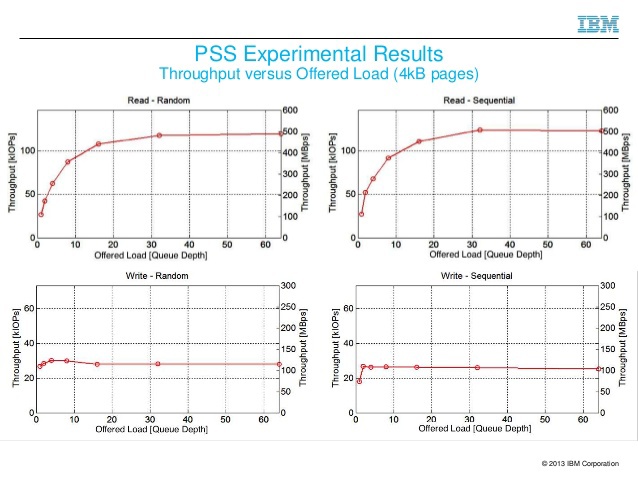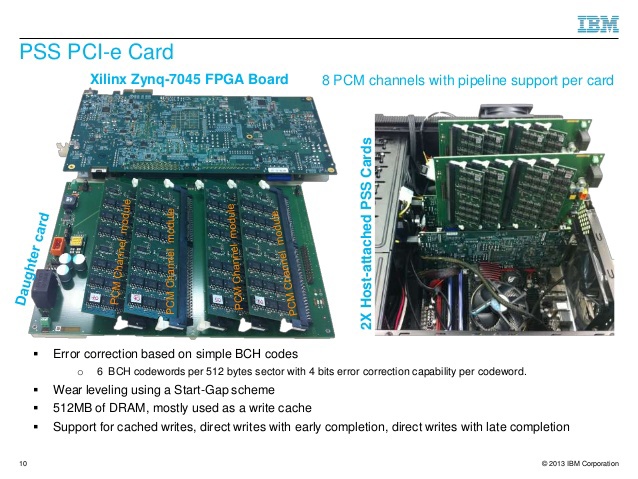The new PCM-memory from IBM is 275 times faster than flash-memory. Theseus project

The other day, IBM has presented a very interesting phase change memory (PCM) project. The project was named Theseus , and it was shown at the Non-Volatile Memory Workshop 2014 conference in Greece (all matches of names with ancient mythology are considered coincidences :)).
So, the essence of the project is a phase change in the structure of a substance when exposed to this substance current. The substance is divided into conditional cells, and the substance in each cell can take either an amorphous form or a crystalline one. In this case, the amorphous state is considered to be 0, the crystalline (conductive) state is one.
')
The reading of the state of a substance in a cell occurs due to the use of ultralow currents, which do not affect the state of a substance in a cell. The change in the state of a substance is not a one-off, of course, the developers indicate that the conditional number of write cycles on such a carrier reaches a million .

It should be noted that the idea of using a substance that changes the structure under the influence of current for storing information was proposed back in the 70s of the last century. However, any successful implementation of this idea was not carried out. This is because, even in the recent past, the size of the board with any sane amount of memory had to reach large sizes.

As for the test results, the PCM write speed is impressive: 99.9% of requests were completed in just 240 microseconds. The same test, which uses PCI-e flash cards and SSD, showed that the recording is 12 and 275 times slower than in the case of using a new type of memory.
As can be seen in the photo, and now such a board can hardly be called portable. However, this is the initial stage of the project, which has just started to show interesting results. At the same time, developers do not plan to use "clean" PCM memory. Commercial devices will use hybrid PCM-NAND technologies, which allows to reduce the size of the board, as well as significantly speed up the reading / writing of information, compared to modern SSDs.

The interface for connecting such a board is PCI-e, with which almost any modern computer is compatible.
It is expected that the first commercial samples of the new memory will appear in 2016. The project team believes that such memory is optimal for use in enterprise-class server equipment, where work with huge amounts of data is underway, and maximum speed is required.
By the way, here is the presentation of the project in English .
Source: https://habr.com/ru/post/223053/
All Articles